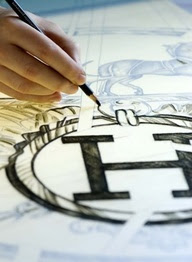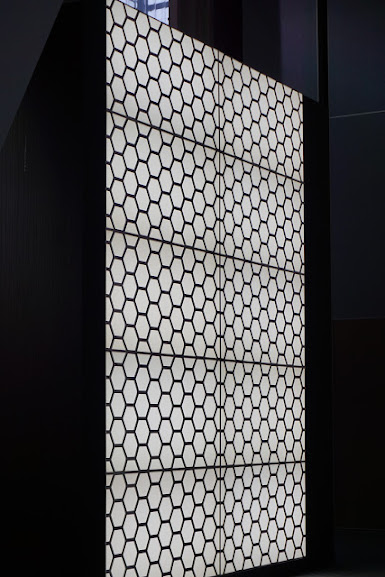A Visit To The East Hampton LIbrary's 18th Annual Author's Night by Miles Stephenson
Brian De Palma & Susan Lehman
Katie Couric signing books
Observations from a Cinephile
at the 2022 East Hampton Library Author’s Night
by Miles Stephenson
This piece was originally published on The Vernon Show, the daily film review journal by screenwriter Miles Stephenson. The 18th Annual East Hampton Library’s Author’s Night was held Saturday, August 13th in Herrick Park. Visit here to learn more.
under the tent in East Hampton's Herrick Park
On Saturday night, I attended the 18th annual East Hampton Library's Author’s Night in a tented pavilion in Herrick Park. I heard it referred to as “the most important literary event on the East End of Long Island,” a dozen times, and with good reason. The spread of writers in attendance was, well, baffling. From across the industries of journalism, film, science, architecture, fiction and art and from the halls of the U.S. Capitol to the studio lots of Hollywood, figures like Katie Couric, Brian De Palma, Neil deGrasse Tyson, John Avlon, and Dwight Chapin were shoulder to shoulder, singing copies of their books and answering the probing questions of writers like myself.
When I arrived at the event and stepped over the hill from Newtown Lane, I was met by a greeter in a golf cart who drove me and other guests toward the baseball diamond. It was a mostly middle-aged spry and preppy crowd of pastels, eager to line up for the celebrities and to go for seconds of the lemon poppy seed bread at the food bar. As a film buff, I immediately staked out the movie writers. The first book I encountered was In Love with Movies: From New Yorker Films to Lincoln Plaza Cinemas, written by the late film distributor and theater impresario Dan Talbot and edited by his 93-year-old wife Toby Talbot who was in attendance and who taught as a professor of literature at my alma mater Columbia. As a resident of the Upper West Side and an avid but disgruntled theater-goer in the age of streaming, I have long been an admirer of Dan and Toby who ran the Lincoln Plaza Cinemas from 1981 until its close four years ago. When it shut down in 2018, Upper West Side movie lovers who had enjoyed their independent, artistic, and well-curated films sourced from all over the world were left to the big-time programming of local multiplexes. The couple often took chances on small-time directors when said filmmakers were without distributors, as was the case when Dan picked up Bernardo Bertolucci’s first film and went on to distribute classics like My Dinner with André (1981) and Aguirre, the Wrath of God (1972). Without Dan and Toby, American audiences today would not be as familiar with movements like the French New Wave and New German Cinema and might have missed the works of now legends like Bertolucci, Varda, Fassbinder, Godard, Wenders, and Kiarostami. Director of Aguirre, Werner Herzog (one of my favorite filmmakers for his dark epic Fitzcarraldo) wrote the foreword for the book.
The next film book I stumbled upon was from Washington Post book reviewer and film historian John DiLeo. His new volume There Are No Small Parts: 100 Outstanding Film Performances with Screen Time of 10 Minutes or Less was flying off the proverbial shelves. Born in Brooklyn and raised on Long Island, DiLeo writes about film and theater personalities like Tennessee Williams and Audrey Hepburn, often focusing on Hollywood’s Classic Period, the era which Robert B. Ray called “the single most important body of films in the history of cinema, the one that set the terms by which all movies, made before or after, would be seen.”
I picked up a signed copy of There Are No Small Parts; my favorite profiles of cinematic tidbits so far are Al Pacino’s role in Once Upon a Time… in Hollywood (2019) and Gene Wilder’s in Bonnie and Clyde (1967).
The next writer doesn’t need an introduction. Sandwiched between celebrity journalist Katie Couric’s line of fans and those lined up for Slim Aarons’ chic mid-century photography, there was a writer and artist with little to no one at his booth. I was shocked, even flabbergasted. How could it be that I would get so much face-to-face interview time with this man? Had the rest of the press simply not noticed him? I settled on the idea that many of the people here got their reading recommendations from the New York Times and The New Yorker, reading primarily suspense novels and the occasional hard-hitting piece of liberal journalism. What must have been absent were movie lovers because the man who sat alone was Brian De Palma.
Collaborating with writers like Stephen King, Oliver Stone, and David Koepp (another author in attendance at the event for his new book Aurora) and actors like Al Pacino, Sissy Spacek, and John Travolta, De Palma directed his first feature in 1968. Soon, De Palma was a pioneer of the New Hollywood generation, forever expanding the suspense, horror, and crime thriller genres with Scarface, Carrie, Blow Out, Carlito’s Way, Body Double, Femme Fatale and Dressed to Kill. His biggest fans have a celebrity of their own. Tarantino called De Palma “the greatest director of his generation,” a generation mind you that included Scorsese, Coppola, Altman, Allen, Lucas and Friedkin. Tarantino lists Blow Out (1981) as one of his three desert island movies, calling it De Palma’s masterpiece. Scorsese is another of De Palma’s fans, saying, “when we were all trying to get our first picture made, Brian De Palma was leading the way… Brain was the model of the truly independent filmmaker.” This time around, however, De Palma was in attendance not for a film, but for a new novel he has written with New York Times Op-Ed editor Susan Lehman titled Are Snakes Necessary?
When I spoke with De Palma, I asked him why he thought there was this trend of filmmakers turning to novels. Action flick auteur Michael Mann released Heat 2: A Novel this month and screenwriter David Koepp (Jurassic Park, Spider-Man, Panic Room) released his novel this June. He said that during the pandemic lockdown many filmmakers that usually had access to sets, studio budgets, and large casts and crews were forced to get back to the basics and write in a solitary way in their homes. I’ve spoken to movie junkie friends recently who rarely pursue novels who have told me that they can’t wait for the new Heat book or De Palma thriller. It’s a fascinating trend in a time when teens and young adults spend more time on digital media and less time reading; is it possible that the pandemic-induced disruption of film production caused a temporary youth literary revival? For a more in-depth look at my interview with Brian De Palma, check out my review of Blow Out here where we discuss the use of the split diopter shot in the film and its inspiration from Citizen Kane.
There were dozens of other brilliant writers at the event but as an aspiring writer for TV and movies, the 2022 Author’s Night in the Village of East Hampton was a treat for its inclusion of film historians, distributors, and Hollywood directors.
Interesting notes about the value of the East Hampton Library, and just this year alone- the library has had 113,000 visitors; 157,318 books and other materials have been borrowed; over 14,000 reference and information questions have been answered; over 15,000 have used the library computers; over 16,000 have attended programs at the library; over 9,000 attended history events at the library; and over 23,000 historic documents have been added to the archives.







